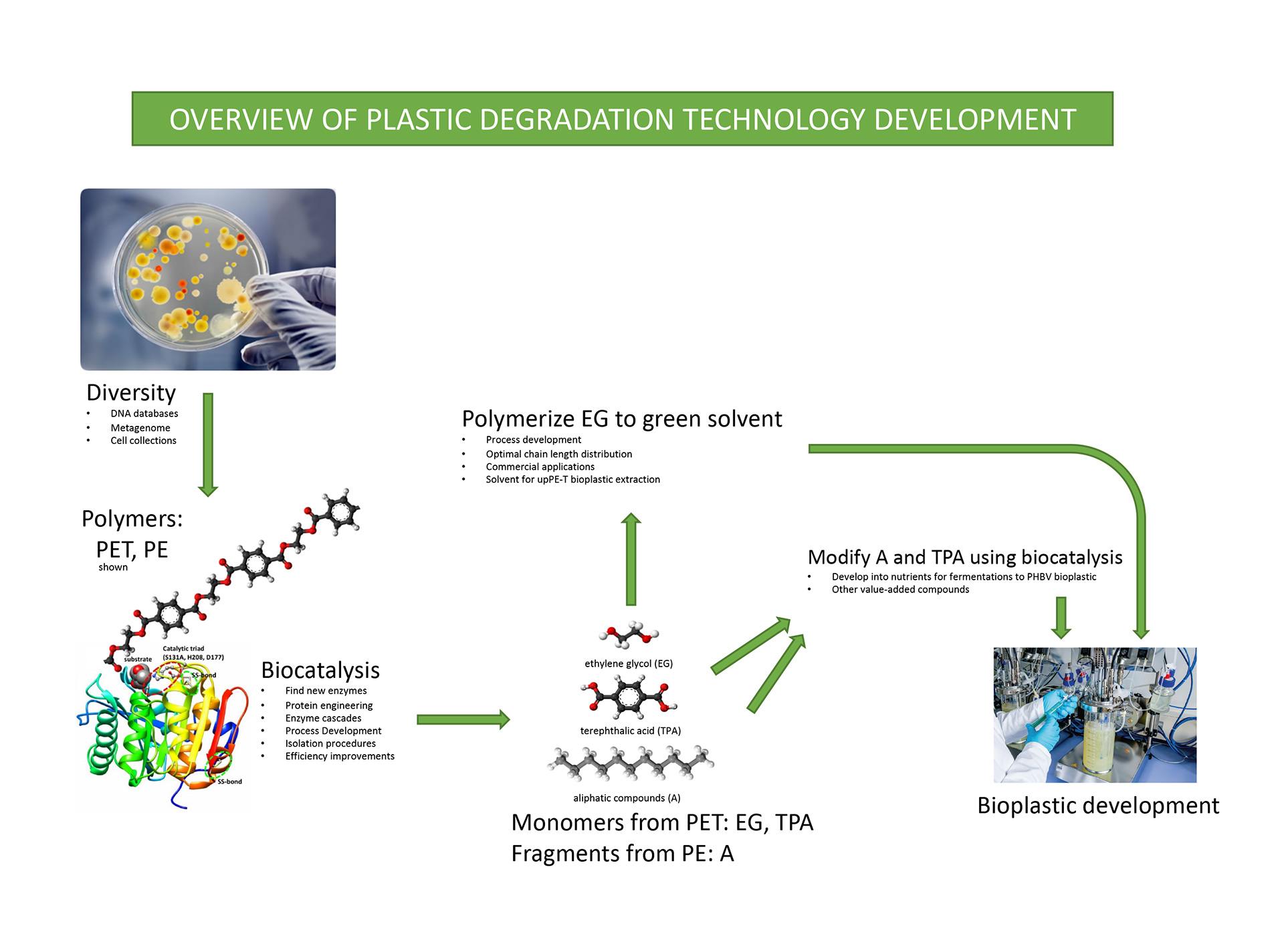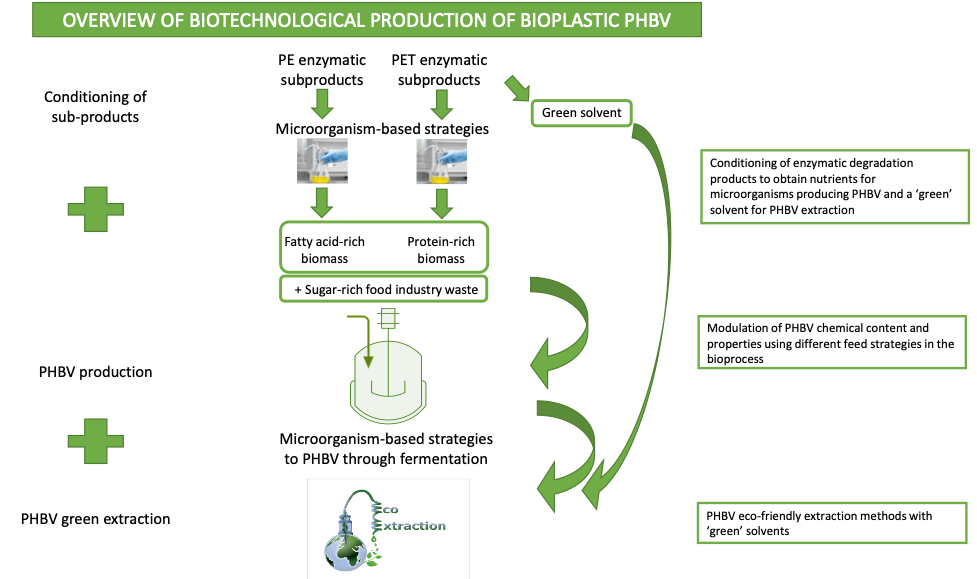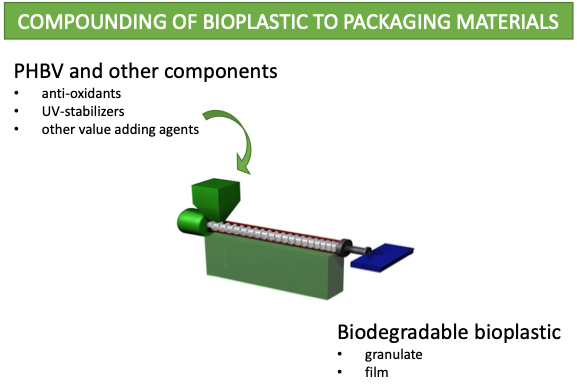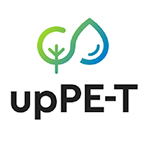The upPE-T project aims to turn plastic food and drinks packaging waste into a valuable resource for making PHBV bioplastics. To achieve this goal, we are working on developing Biocatalytic degradation routes to break down the two most commonly used packaging plastics: PET and PE. The resulting products will be used in fermentation strategies to produce a PHBV bioplastic. Once these processes are scaled up, the PHBV will be compounded and turned into actual demonstrator packaging products.
For PET, the enzymes that can hydrolyze this polyester are known and upPE-T will find new candidates and improve upon them, to develop an efficient and economic process for turning PET into the monomers TPA and EG. For making a new, clear, PET bottle, the TPA and EG from our process would need to meet very stringent purity thresholds and, therefore, in upPE-T we aim to use the TPA as a carbon source in the fermentation to produce bioplastics (see below). The EG will be polymerized to PEG which will be used as a green solvent in the extraction of the bioplastic.
For PE, the challenge of biodegradation is bigger. There have not been any convincing reports in the scientific literature demonstrating a true degradation of PE into fragments. There are microbes and organisms like mealworms that supposedly can grow on PE, but the real molecular mechanism behind that has not yet been elucidated. Also, the ‘degradation’ is terribly slow and there is no indication of which products are formed. However, we will use these reports and the Diversity in nature as a starting point to launch a discovery program using in-silico and wet lab experimentation. PE degradation must go via an oxidative pathway and we expect the products of PE degradation to be aliphatic alcohols/aldehydes/acids. These mixtures will serve (after modification, if required) as a growth substrate in the fermentations of an organism that naturally produces polymers like polyhydroxybutyrate and/or polyhydroxyvalerate (combined they are called PHBV).

In the last years of the project, all these steps will be scaled up and as much as possible integrated into a ‘plastic-waste-to-bioplastic’ process and we will ensure an optimal use of resources by introducing all possible process stream recycles.
The PHBV will be processed/compounded into functional plastic packaging and tested for improved properties like processability, but also for improved food/drink product shelf life.
- Processability
- Mechanical properties
- Barrier properties
- Thermal properties





